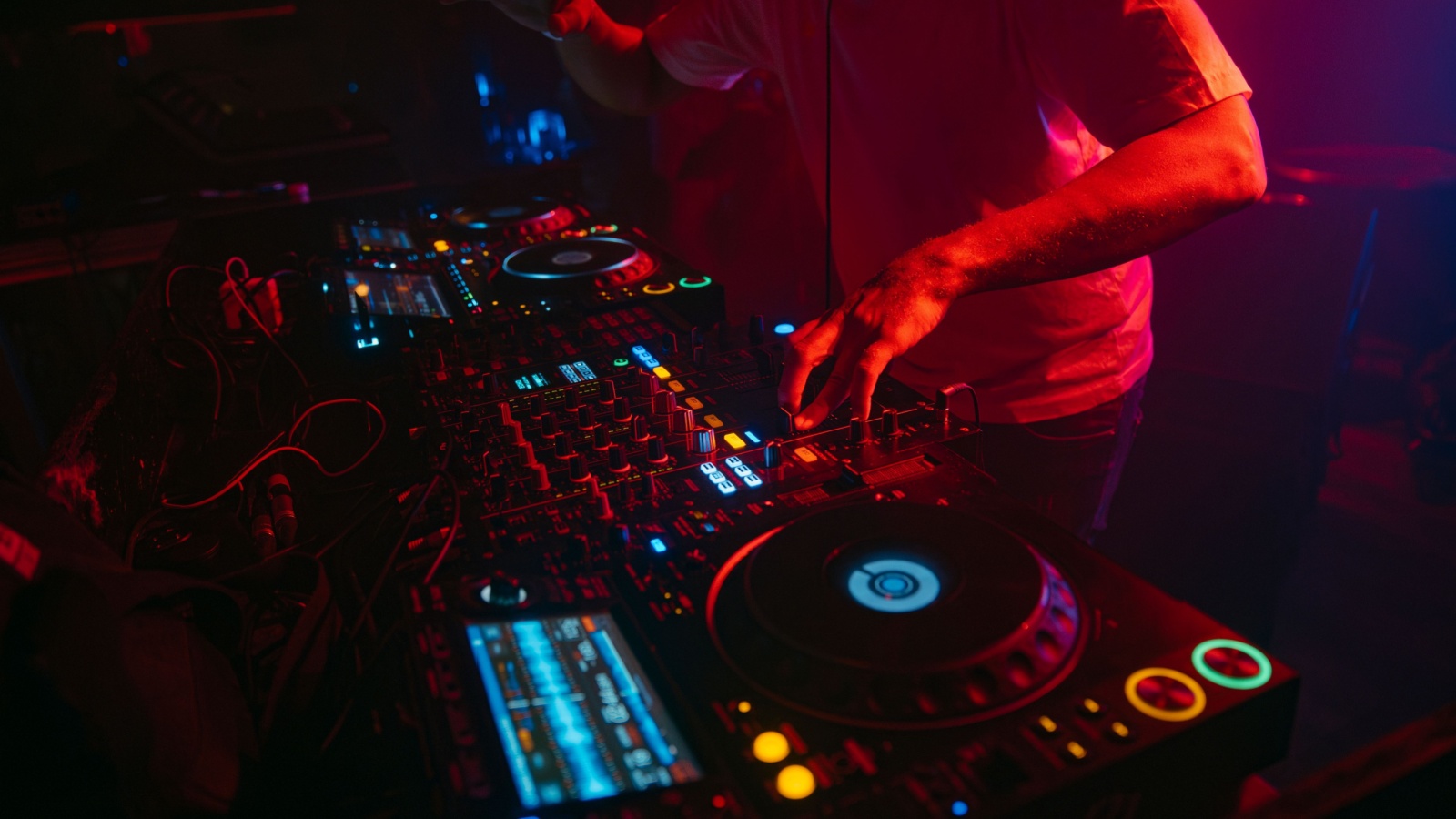Some venues weren’t just places to grab a drink; they were entire cultural movements disguised as bars. From Montreal’s electric underground to Vancouver’s sleek rooftop lounges, these establishments didn’t just host nights out; they shaped decades of music, fashion, and community. Here are 22 Canadian bars and nightclubs that defined an era.
The Bamboo Club (Toronto, Ontario)

Operating from 1983 to 2002, The Bamboo Club was the heart of Toronto’s Queen Street West music scene. It blended reggae, funk, ska, and world music before “fusion” became a marketing term. Artists like The Sattalites and Leroy Sibbles played to diverse crowds that included punks, artists, and professionals alike. The interior’s tropical vibe, complete with murals and a rooftop patio, made it a summer favorite. The Bamboo wasn’t about exclusivity—it was about rhythm and community. When it closed, Toronto lost one of its last true melting pots of sound and culture. Its absence is still felt in local music circles.
Le Spectrum (Montreal, Quebec)

Le Spectrum stood as a premier venue for live performances from 1982 until 2007. Located in Montreal’s Latin Quarter, it offered pristine acoustics and hosted everyone from Radiohead to local jazz ensembles. Its red curtains and intimate atmosphere gave audiences the sense of being part of something momentous every night. Unlike massive arenas, Le Spectrum nurtured talent and fandom in equal measure. When it was demolished to make room for commercial development, thousands of concertgoers mourned not just a building but an entire era of live performance culture in Quebec’s entertainment capital.
The Commodore Ballroom (Vancouver, British Columbia)

The Commodore Ballroom, opened in 1929, remains one of the few legendary venues still thriving today. Its spring-loaded dance floor became the stuff of legend, allowing patrons to quite literally bounce with the music. The Commodore hosted generations of acts, from punk pioneers like The Clash to modern icons like Arcade Fire. Its ability to adapt with the times, shifting from swing to disco to grunge, defined it as Vancouver’s ultimate time capsule of sound. Even after renovations, its Art Deco charm and storied energy remain unmistakable, making it a rare survivor in Canada’s nightlife evolution.
The Purple Onion (Toronto, Ontario)

Located in Yorkville during the 1960s, The Purple Onion was a bohemian coffeehouse turned performance hotspot. It became an essential venue for folk musicians before they hit global fame. Gordon Lightfoot, Buffy Sainte-Marie, and Joni Mitchell all graced its small stage, often performing for audiences that didn’t yet realize they were witnessing history. What made the venue special wasn’t the décor; it was the intimacy. The Purple Onion’s closure marked the end of Yorkville’s countercultural golden age and the beginning of its transformation into a polished, upscale district.
Limelight (Toronto, Ontario)

In the late 1980s and early 1990s, Limelight ruled Toronto’s dance scene. It was known for its theatrical architecture, stained glass, balconies, and cavernous interiors that looked more like a cathedral than a club. Limelight attracted international DJs, fashionistas, and the emerging rave crowd. It represented the transition from disco’s flamboyance to electronic’s energy. While its notoriety grew with stories of wild after-hours parties, Limelight was also where many Canadian DJs launched their careers. When it shut down, it marked the end of an opulent, pre-social media nightlife that thrived on word-of-mouth mystique.
Foufounes Électriques (Montreal, Quebec)

Known simply as “Foufs,” this punk and alternative venue has been a cornerstone of Montreal’s underground since 1983. Its graffiti-covered walls, affordable drinks, and mosh-pit energy turned it into a sanctuary for artists and rebels. Bands like Nirvana and Green Day played early shows there, long before global fame. Foufs was less about glamour and more about freedom—anyone could walk in and feel like they belonged. Though it continues to operate, its 1990s peak remains a symbol of Montreal’s fearless creative spirit during the grunge and industrial music boom.
Whiskey Saigon (Toronto, Ontario)

Whiskey Saigon brought upscale nightlife to Toronto’s entertainment district in the early 2000s. It was known for strict door policies, sleek interiors, and A-list clientele. For many, it was their first introduction to bottle service and celebrity sightings. Despite criticism for its exclusivity, Whiskey Saigon shaped the model for future high-end clubs like Maison Mercer and Rebel. When it closed, it left behind an unmistakable imprint: a generation that equated nightlife with luxury and fashion-forward confidence. It redefined Toronto’s social hierarchy in nightlife terms, blending glamour with unapologetic indulgence.
Barrymore’s Music Hall (Ottawa, Ontario)

Housed in a 1920s theatre, Barrymore’s became Ottawa’s premier live music venue in the 1980s and 1990s. Its mix of indie acts, retro nights, and community events created a loyal fan base. The weekly “80s Night” became a rite of passage for students and young professionals alike. Barrymore’s wasn’t just about concerts; it was about nostalgia and connection. Over the years, financial troubles led to several closures and reopenings, but its legacy endures as a key player in Ottawa’s cultural identity, bridging generations through music and shared dancefloor memories.
Republik (Calgary, Alberta)

Republik was Calgary’s answer to underground cool. The club combined indie rock, alternative fashion, and gritty atmosphere into something distinctly urban. Emerging in the mid-1990s, it became the go-to spot for anyone avoiding mainstream nightlife. Local and international acts, Arctic Monkeys, The Killers, and Metric, played intimate shows there. Republik represented Calgary’s cultural rebellion, a place where art and nightlife coexisted. When it closed in 2015, many called it the end of Calgary’s authentic live music era, replaced by sanitized bars with no edge or character.
The Matador (Toronto, Ontario)

Technically a late-night dance hall rather than a bar, The Matador earned cult status as an after-hours haven from 1964 to 2007. With its unmarked exterior and rickety staircase, it drew a mix of musicians, artists, and insomniacs. Country legends like Johnny Cash once played there, but so did indie darlings decades later. It was open when everything else closed, offering live music until dawn. Even as Toronto gentrified around it, The Matador’s resilience and character made it a last bastion of authentic nightlife grit.
Velvet Underground (Toronto, Ontario)

Named after the iconic band, this Queen Street club became a temple for alternative and goth subcultures. Opening in the 1990s, it offered a dark, intimate space that pulsed with industrial beats and underground aesthetics. Unlike mainstream clubs, Velvet encouraged individuality and expression. Its black walls and dim lighting created an atmosphere where fashion and music merged into identity. Though it has since reopened under new management, the original era defined Toronto’s alternative nightlife scene, gritty, creative, and unapologetically niche.
Le Cactus (Montreal, Quebec)

Le Cactus served as one of Montreal’s most beloved student bars, especially during the 1990s and early 2000s. Known for its lively karaoke nights and eclectic decor, it attracted a young, international crowd. The bar was chaotic in the best way possible: cheap drinks, loud laughter, and spontaneous performances. It wasn’t trying to be elite; it was trying to be fun. That authenticity made it stand out in a nightlife landscape that was increasingly commercial. When it eventually shut down, many former students described it as the unofficial classroom for social life in Montreal.
Embassy Club (London, Ontario)

London’s Embassy Club offered big-city vibes in a smaller market. During the 2000s, it became the destination for dance music lovers in Southwestern Ontario. With state-of-the-art lighting and sound, it regularly booked top DJs and themed events. The Embassy created a nightlife identity for a city often overshadowed by Toronto. For students and locals alike, it represented escape and excitement. Its closure in 2013 was mourned as the loss of a rare bridge between student nightlife and sophisticated club culture.
The Drake Hotel (Toronto, Ontario)

Before it became a boutique destination, The Drake was a gritty performance venue that championed independent music and art. Its revival in the early 2000s marked the rebirth of West Queen West as Toronto’s creative hub. The mix of live shows, rooftop parties, and art installations redefined what nightlife could be, an experience, not just an outing. Artists, designers, and musicians made The Drake their basecamp. It remains one of the few places that successfully blended culture and commerce without losing authenticity.
Joe Kool’s (London, Ontario)

Since 1983, Joe Kool’s has been synonymous with fun and familiarity. It blended sports bar energy with nightclub liveliness, offering something for everyone. Its rooftop patio became the go-to spot for summer nights, while its downstairs bar kept the beats going year-round. Joe Kool’s proved that a venue didn’t need celebrity DJs or exclusivity to define an era, it needed personality. It continues to operate, but its 1990s heyday remains legendary among students and locals who grew up in its laid-back yet electric atmosphere.
Tazmanian Ballroom (Halifax, Nova Scotia)

Known simply as “The Taz,” this Halifax nightclub was the center of Atlantic Canada’s 1980s party scene. It combined live rock performances with energetic DJ sets, offering something different every night. The crowd was famously diverse, and fishermen, students, and military personnel danced side by side. It was chaotic, loud, and completely unpretentious. When it closed, locals lamented the loss of one of the few places that captured the East Coast’s raw, unfiltered nightlife energy before commercialization took over.
Flashbacks (Winnipeg, Manitoba)

Flashbacks dominated Winnipeg nightlife in the 1980s and early 1990s. With its massive dance floor, laser shows, and themed nights, it was the ultimate escape for a generation that craved big beats and bigger hair. It also became a safe space for the city’s LGBTQ+ community before inclusivity was widely accepted. Its mix of disco, new wave, and house music created an atmosphere of pure liberation. The club’s closure marked not just the end of an era but the fading of a cultural sanctuary that had provided joy and belonging.
Zaphod Beeblebrox (Ottawa, Ontario)

Named after a character from The Hitchhiker’s Guide to the Galaxy, Zaphod’s opened in 1992 and quickly became Ottawa’s quirkiest live music venue. Hosting acts like The White Stripes before they hit the mainstream, it combined sci-fi eccentricity with genuine passion for live music. The bar’s slogan, “Serving the universe since 42”, became part of the city’s identity. It closed in 2017, leaving a gap in Ottawa’s indie scene that still hasn’t been filled. Zaphod’s was more than a bar; it was a creative nerve center.
Club Soda (Montreal, Quebec)

Club Soda, which opened in 1982, became one of Montreal’s most respected live venues. Its stage welcomed legends across genres, from David Bowie to Leonard Cohen. Despite multiple closures and relocations, it maintained its reputation for exceptional acoustics and atmosphere. Club Soda’s commitment to live performance over gimmicks made it timeless. Even when nightlife trends shifted toward electronic music, it stayed loyal to its roots. Its ongoing legacy lies in its consistency, always about the music, never about the hype.
Cabanas (Edmonton, Alberta)

In the early 2000s, Cabanas defined Edmonton’s nightlife. It brought tropical aesthetics to a city known for long winters, featuring palm decor, high-energy DJs, and themed parties. It was unapologetically flashy but always fun. The club’s popularity among university students made it a rite of passage. Though it eventually closed, Cabanas inspired the next generation of venues to blend experience with escapism. It wasn’t just a club; it was an emotional getaway in a frozen city.
The Palladium (Montreal, Quebec)

The Palladium was Montreal’s answer to Studio 54, lavish, theatrical, and endlessly glamorous. At its peak in the late 1970s, it was where disco royalty met social elites. The lighting, costumes, and extravagance set a new bar for nightlife in Canada. Despite its short lifespan, The Palladium’s influence lasted for decades, inspiring future generations of clubs to aim higher in design and experience. It was the epitome of indulgence and one of the first venues to show that nightlife could be an art form.
El Mocambo (Toronto, Ontario)

El Mocambo, established in 1948, remains an icon of Toronto’s live music heritage. The Rolling Stones’ secret 1977 concert there cemented its global reputation. The venue combined an intimate space with a major stage presence, making every performance memorable. It was a launchpad for countless local bands and a must-play stage for international stars. Though it faced several closures and renovations, its neon palm sign continues to shine. El Mocambo’s resilience symbolizes the enduring pulse of Toronto’s nightlife, ever-evolving, yet deeply rooted in history.
21 Products Canadians Should Stockpile Before Tariffs Hit

If trade tensions escalate between Canada and the U.S., everyday essentials can suddenly disappear or skyrocket in price. Products like pantry basics and tech must-haves that depend on are deeply tied to cross-border supply chains and are likely to face various kinds of disruptions
21 Products Canadians Should Stockpile Before Tariffs Hit
